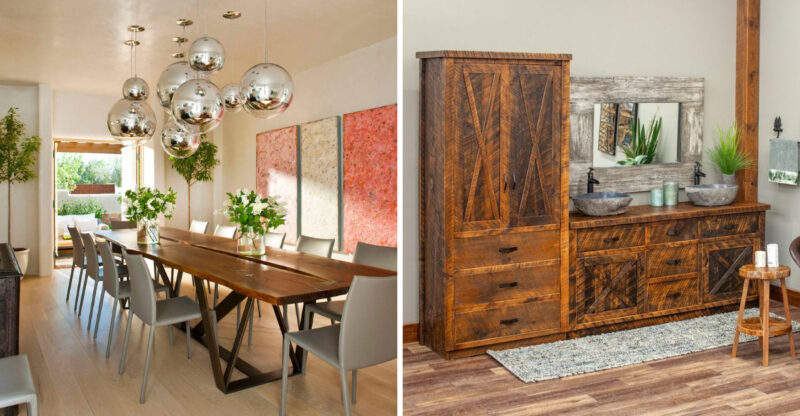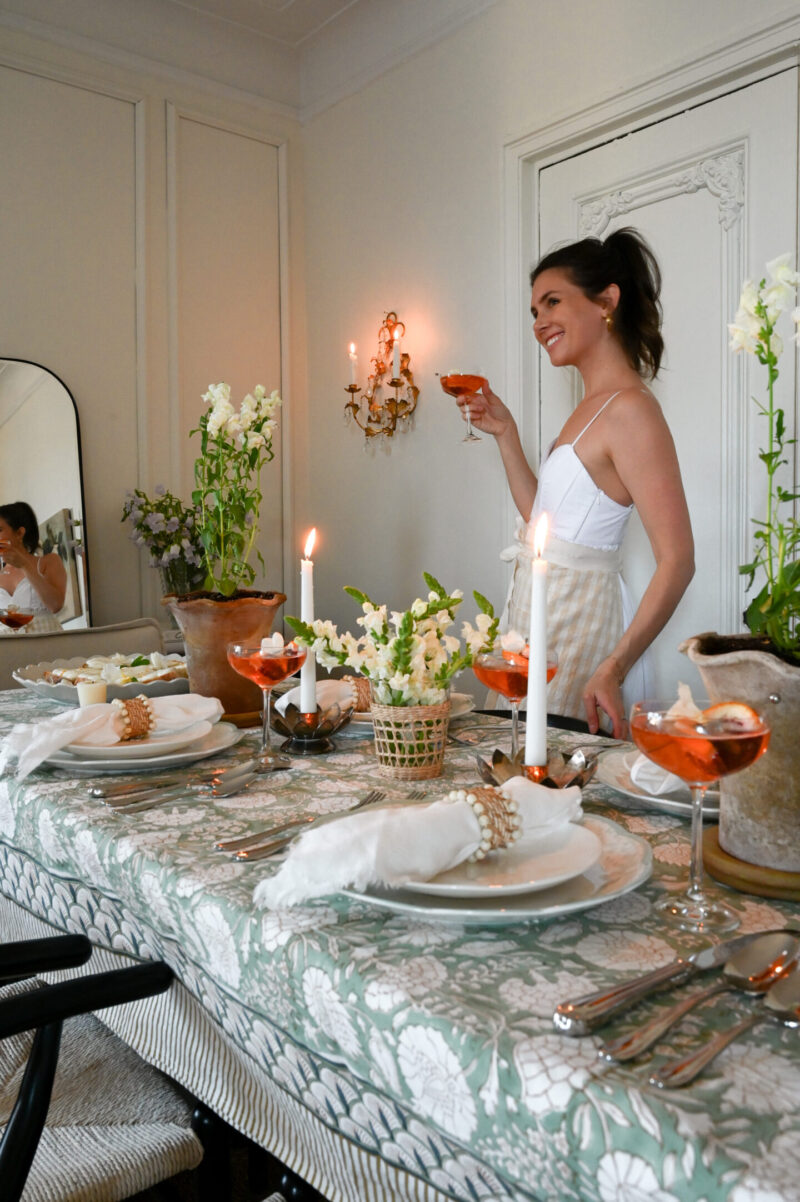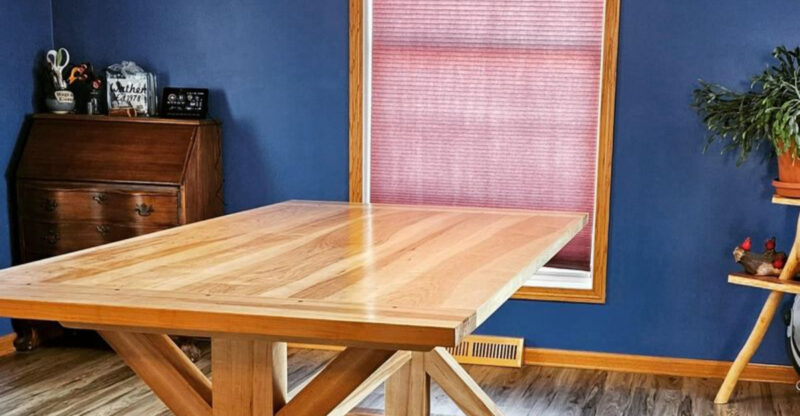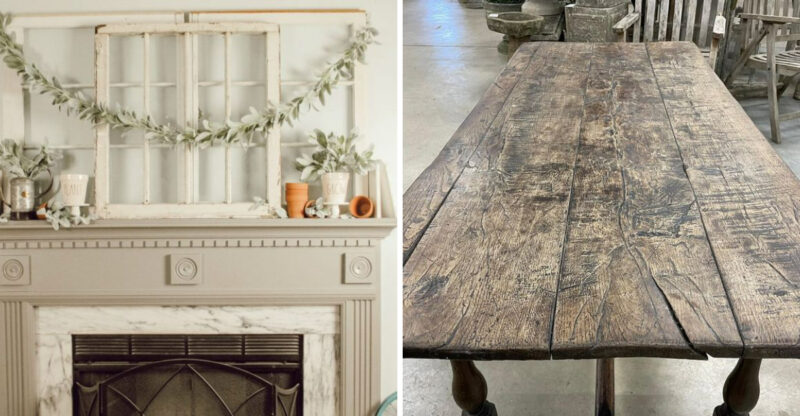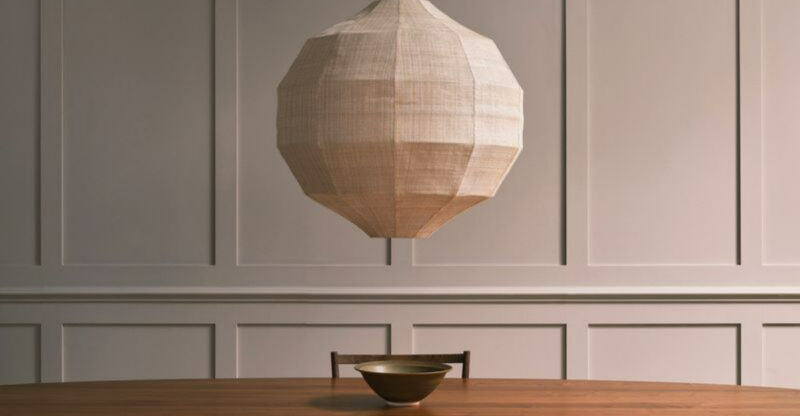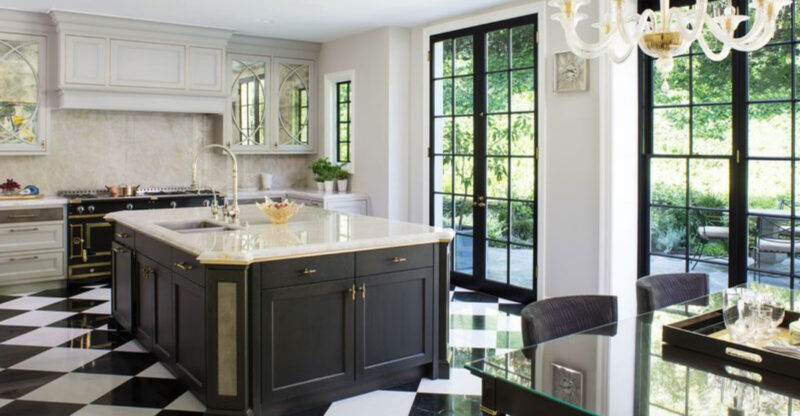Inside Alabama’s Forgotten Mansion Overflowing With Antique Treasures
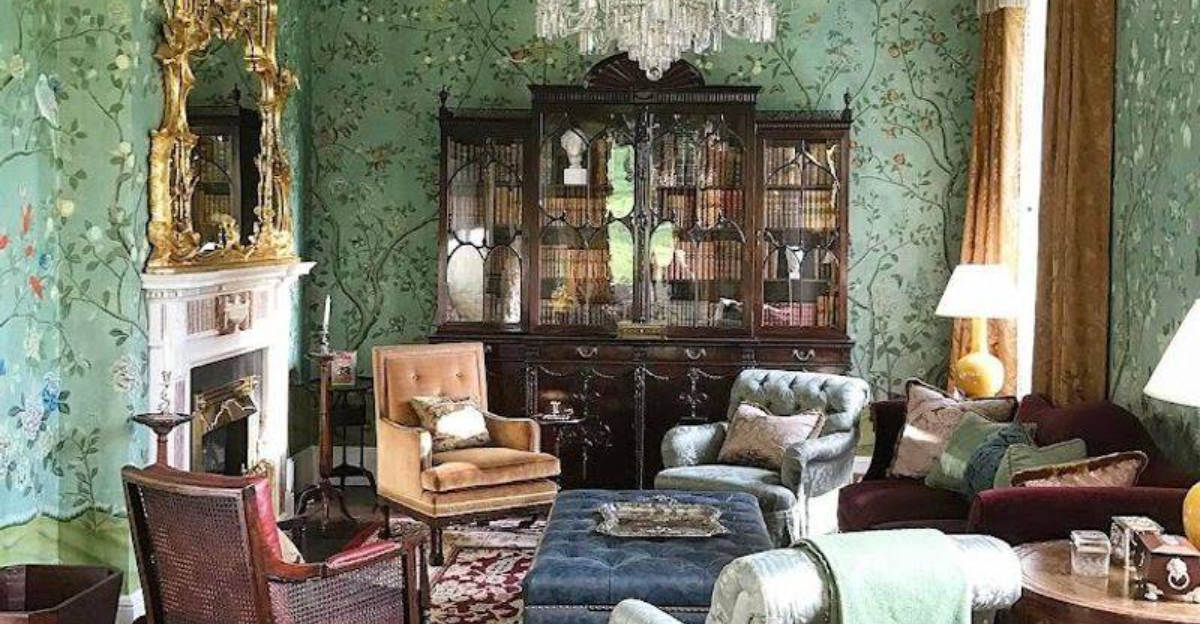
Tucked deep in the Alabama countryside lies a forgotten mansion, its grand halls sealed off from the world for generations.
Time has stood still behind its towering doors, guarding a hauntingly beautiful collection of antiques, heirlooms, and untouched Southern history. When I was granted rare access to explore its decaying splendor, I expected echoes of the past but what I found was far more powerful.
Step inside with me and uncover the breathtaking secrets of a home that’s been waiting quietly to share its story.
1. Grand Staircase Whispering Tales of Southern Balls
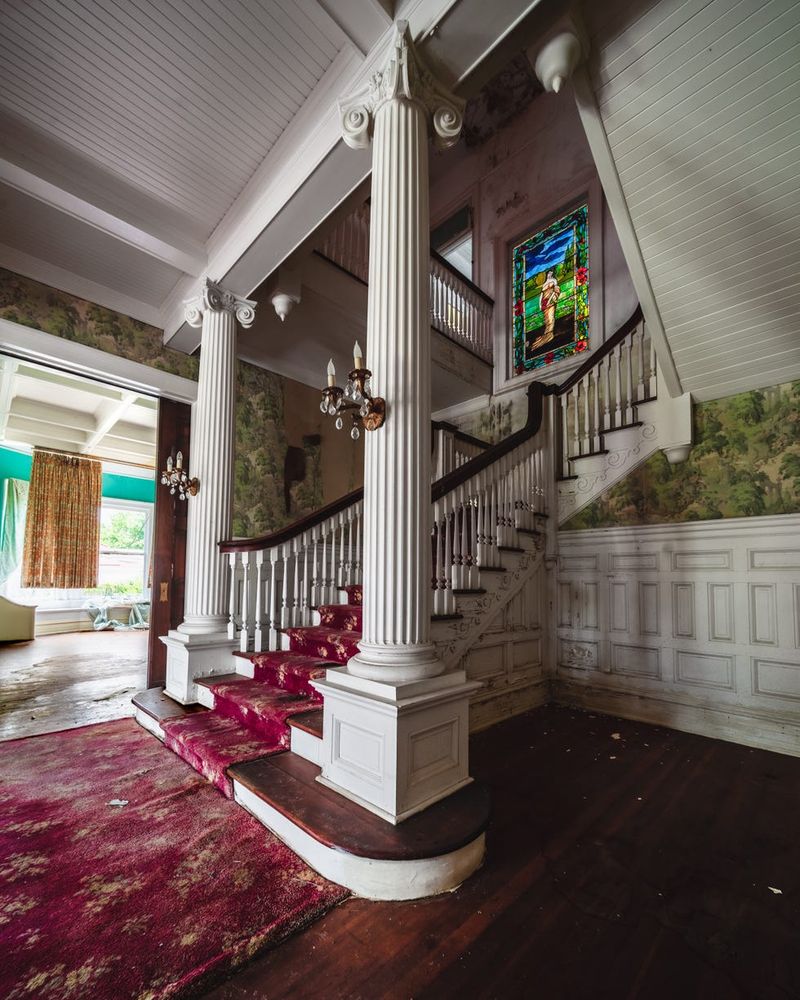
The sweeping mahogany staircase dominates the entrance hall, spiraling upward like a wooden tornado frozen in time. Each step has been worn slightly in the middle, evidence of countless debutantes who once descended in their finest gowns.
I ran my fingers along the smooth banister, wondering about the white-gloved hands that had touched this same wood over a century ago. The craftsmanship is remarkable intricate carvings of magnolia blossoms adorn each spindle.
What makes this staircase truly extraordinary is its acoustics. Standing at the bottom, you can hear whispers from the upper landing – a clever architectural trick that allowed servants to anticipate guests’ arrivals during lavish parties of yesteryear.
2. Crystal Chandelier That Survived The Civil War
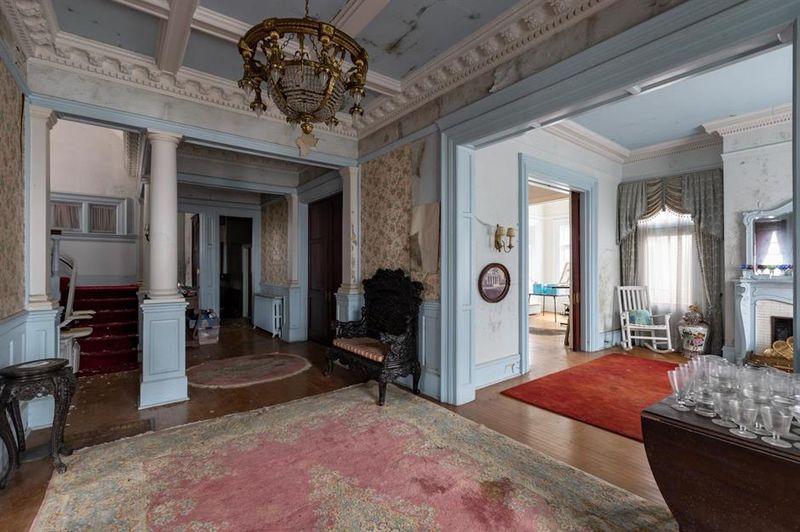
Hanging precariously from the ceiling is a massive crystal chandelier that somehow survived both time and conflict. Hundreds of hand-cut crystals catch even the faintest light, throwing rainbow prisms across the peeling wallpaper.
During the Civil War, the mansion’s original owner reportedly buried this French masterpiece in the garden to prevent Union soldiers from looting it. The crystals still bear tiny imperfections from being hastily cleaned after their underground hiding.
Most chandeliers of this period were converted to electricity, but this one remains in its original state with candle cups designed to hold real flames. The caretaker told me they briefly lit it during a documentation project in 1997, the first time it had sparkled to life in over 80 years.
3. Vintage Library With First-Edition Southern Classics
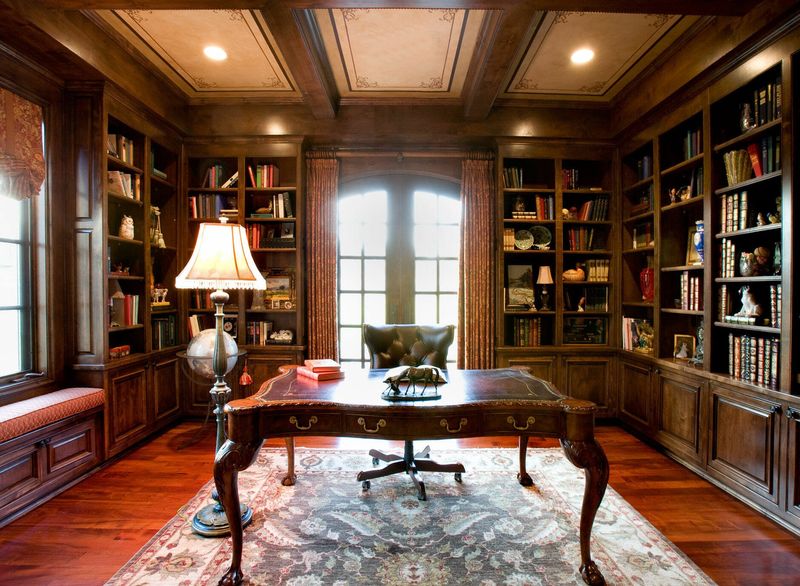
Shelves upon shelves of leather-bound books line the walls of this forgotten library, many first editions signed by authors who visited the mansion. The scent of old paper and leather bindings creates an intoxicating perfume that book lovers would recognize instantly.
Among the treasures, I discovered a first-edition of ‘To Kill a Mockingbird’ with a personal inscription from Harper Lee to the mansion’s last owner. The collection spans centuries, with works dating back to the 1700s, including several books brought over from England when the family first settled in Alabama.
Did you know the library features a hidden door disguised as a bookshelf? It leads to a small study where the owner reportedly wrote correspondence during the Reconstruction era, away from prying eyes and unwanted visitors.
4. Marble Fireplace With Presidential Connections
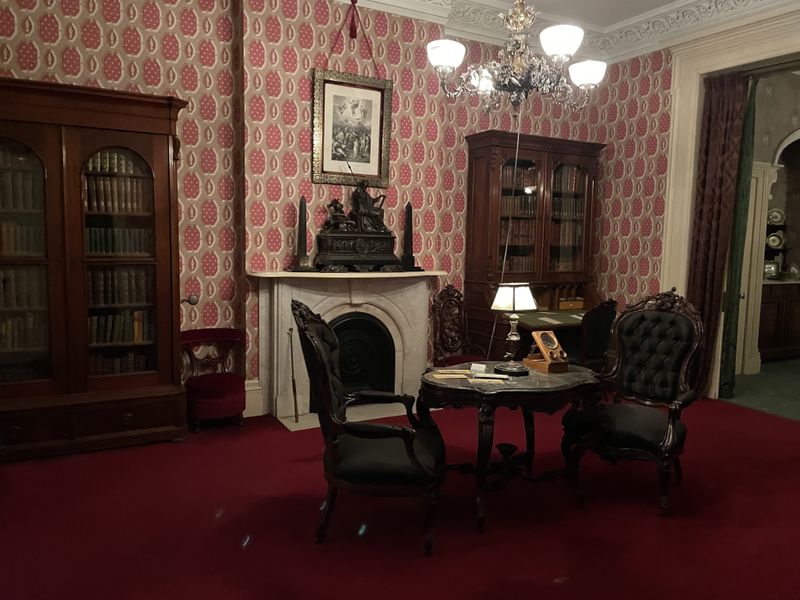
The massive Italian marble fireplace dominates the main parlor, its mantel carved with scenes of classical mythology. Legend has it that President Theodore Roosevelt once warmed his hands here during an unexpected visit to Alabama in 1907.
What’s truly remarkable is the fireplace’s hidden compartment a small drawer built into the side of the mantel that once contained the family’s most precious documents. The caretaker showed me where generations of children had scratched their heights into the marble’s back edge, a timeline of family growth spanning over 120 years.
Though covered in decades of soot, the veining in the marble tells of its exceptional quality. Historians believe this particular piece was salvaged from an Italian palazzo and shipped piece by piece to Alabama during the mansion’s construction in 1873.
5. Period Dining Room Where Governors Feasted
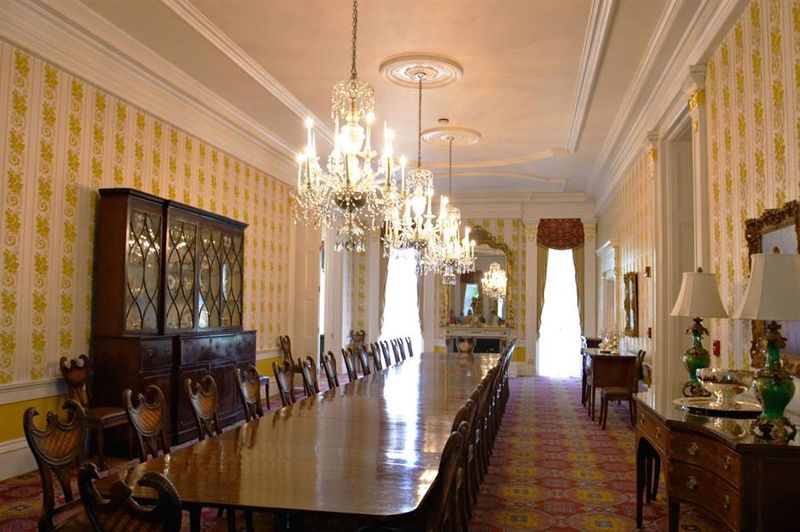
The dining room table stretches nearly twenty feet long, capable of seating thirty guests for the elaborate dinners that made this mansion famous throughout the South. Every Alabama governor from 1880 to 1920 reportedly dined here at least once.
Above the table hangs a painting depicting the mansion in its heyday, showing horse-drawn carriages arriving for what appears to be a Christmas celebration. The room’s acoustics were intentionally designed so conversations from one end couldn’t be heard at the other allowing for private political discussions even during large gatherings.
The most fascinating feature is the butler’s pantry with its original call system – a series of labeled bells connected to different rooms of the house. Each governor’s visit is documented in the family’s dining journal, which remarkably survived and details menus served over 140 years.
6. Antique China Cabinet With Royal Connections
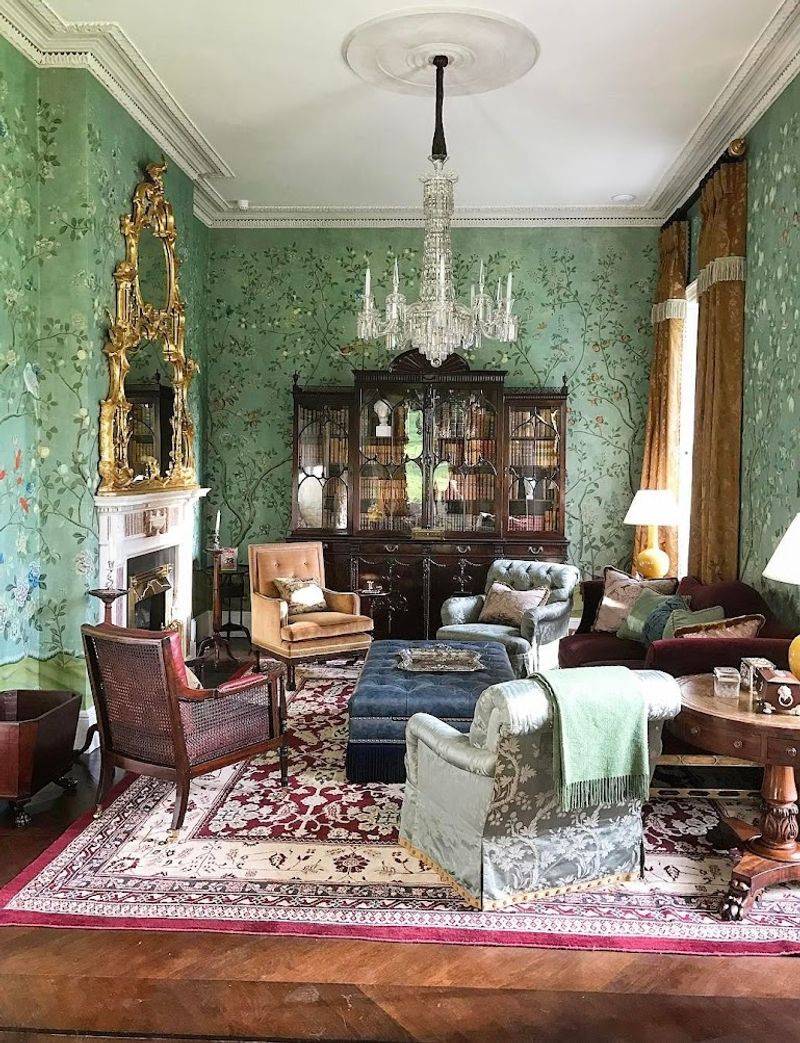
Standing against the dining room wall is a towering china cabinet filled with porcelain that hasn’t been touched in decades. The dust-covered collection includes pieces from Sèvres, Meissen, and Wedgwood – many bearing the family crest specially commissioned for generations.
My favorite discovery was a set of teacups reportedly used when British royalty visited during a tour of America’s Deep South in the 1890s. The family’s connection to European aristocracy is evident in the cabinet’s contents, including wedding gifts from distant noble relatives who maintained connections despite the American Revolution.
The cabinet itself tells a story bullet holes in its side panels date from the Civil War when Union soldiers ransacked the house. Miraculously, they left most of the china intact, perhaps recognizing its extraordinary value even in a time of conflict.
7. Formal Parlor With Secret Prohibition Compartments
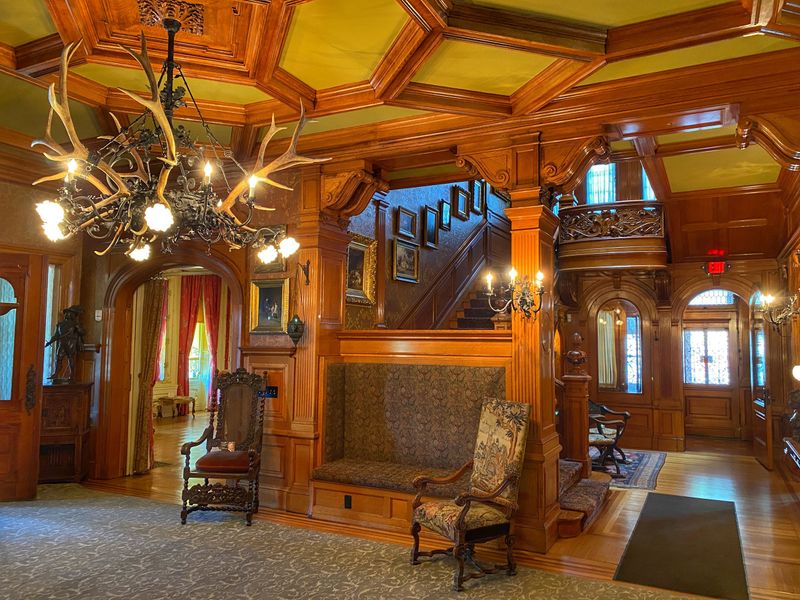
The formal parlor’s elegant Victorian furniture sits arranged exactly as it was during the Prohibition era, when this room served dual purposes. Behind the seemingly innocent façade of Southern gentility, the parlor hides several ingenious secret compartments for storing illegal spirits.
I was amazed to find a hidden button under the arm of a velvet settee that, when pressed, reveals a small compartment that once held bottles of bourbon. Even more impressive is the false bottom in the sheet music cabinet that concealed a complete bartending set. Though the mansion’s owners were publicly supportive of temperance, these hidden features tell a different story.
The parlor’s most remarkable feature is its acoustics designed to amplify piano music while minimizing voices, allowing partygoers to converse without being overheard by potential prohibition agents passing by the windows.
8. Hand-Painted Murals Depicting Cotton Kingdom
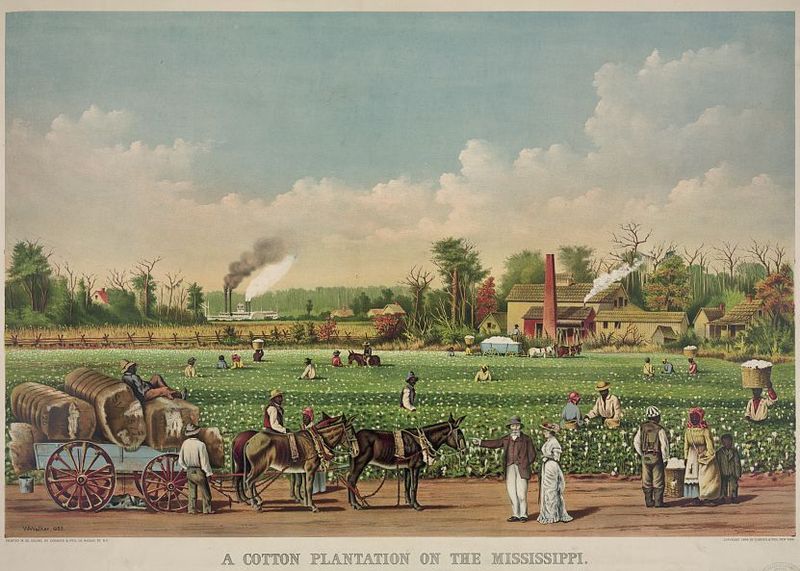
Covering the walls of the main hallway are spectacular hand-painted murals depicting Alabama’s cotton kingdom in its prime. Created by an Italian artist brought specifically to the mansion in 1885, these paintings show idealized scenes of plantation life that contrast sharply with the harsh realities of that era.
The colors remain remarkably vibrant in areas protected from sunlight, with gold leaf accents that still catch the light. What makes these murals particularly significant is the artist’s inclusion of actual local landmarks that no longer exist providing historians with visual evidence of buildings long since demolished.
If you look closely at the harvest scene, you’ll notice the artist included himself as a small figure watching from under a magnolia tree his signature hidden in plain sight. Conservation experts have deemed these murals among the most important artistic treasures in Alabama, desperately in need of preservation.
9. Ornate Woodwork Carved By Former Slaves
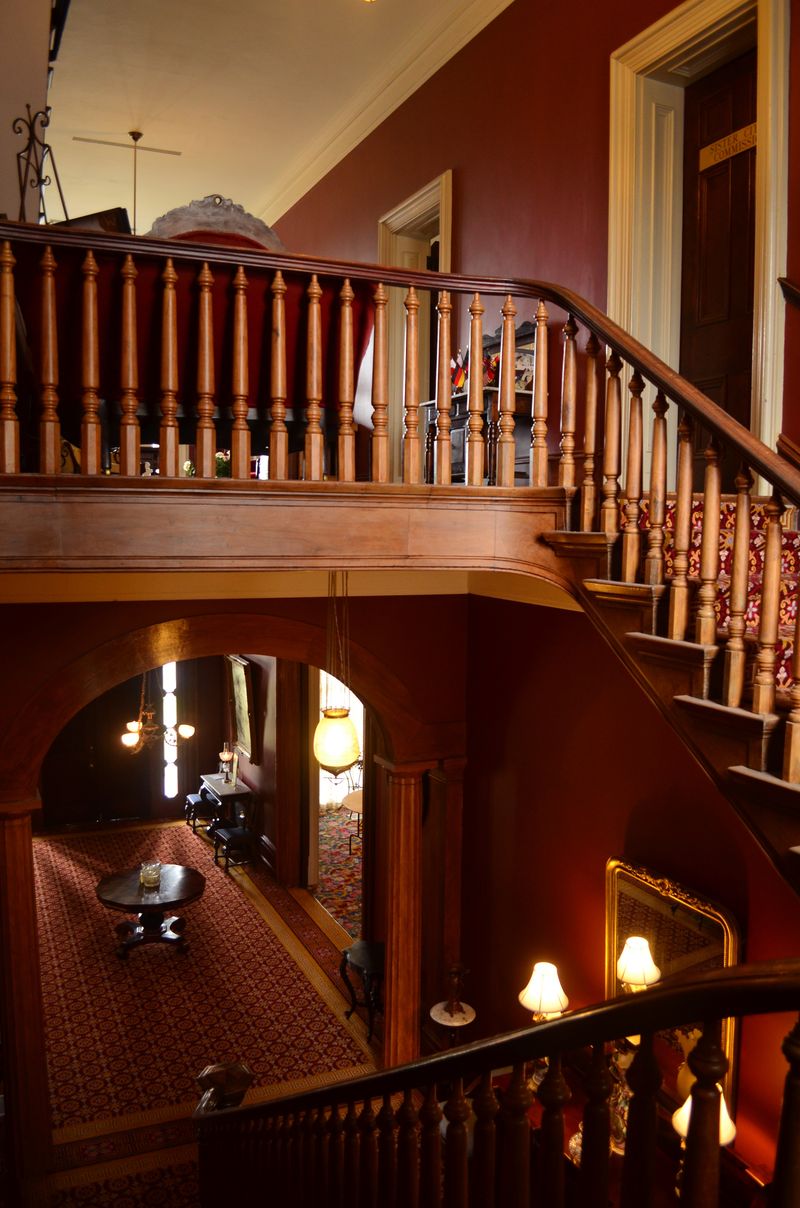
Throughout the mansion, the ornate woodwork tells a complicated story of artistry and America’s troubled past. The intricate carvings were created by formerly enslaved craftsmen who continued working for the family after Emancipation, their extraordinary skill evident in every detailed flourish.
Each doorframe features different native Alabama flowers and plants magnolias, dogwood, cotton blooms creating a botanical catalog in wood. The master craftsman, known only as Solomon in family records, left his mark with tiny initials hidden within the carvings.
Most remarkable is the parlor ceiling, featuring an elaborate wooden medallion from which the chandelier hangs. The medallion depicts the family’s journey from Europe to America, with tiny wooden ships surrounded by waves and sea creatures. Historians have documented this woodwork as among the finest examples of post-Civil War African American craftsmanship in the South.
10. Stained-Glass Windows Telling Confederate Stories
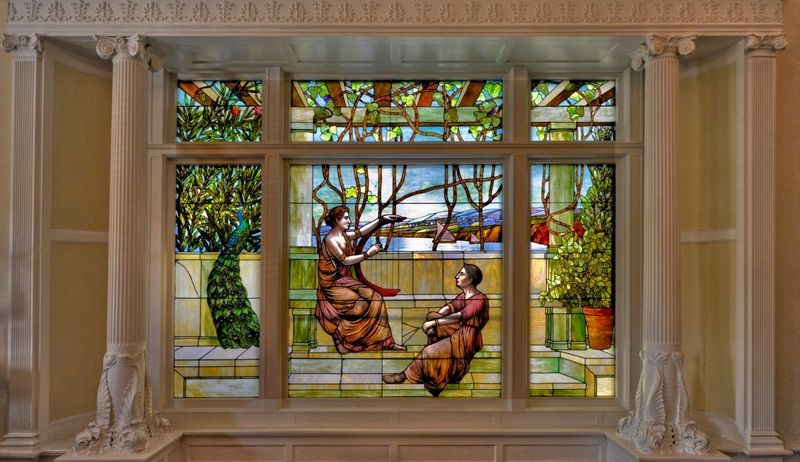
Light filters through magnificent stained-glass windows that line the mansion’s eastern wall, creating kaleidoscopic patterns across the floor each morning. These windows don’t depict religious scenes as one might expect, but rather romanticized moments from Confederate history a troubling artistic testament to the Lost Cause mythology.
The craftsmanship is undeniably exceptional, created by a New Orleans artisan in 1890 who specialized in secular stained glass. The central panel shows Robert E. Lee on horseback, surrounded by smaller scenes of idealized Southern life before the Civil War. What makes these windows historically significant beyond their problematic subject matter is their unique construction technique.
Unlike traditional stained glass, these windows incorporate thin slices of agate and other semiprecious stones that create an extraordinary luminescence when sunlight passes through them a technique largely lost to history.

